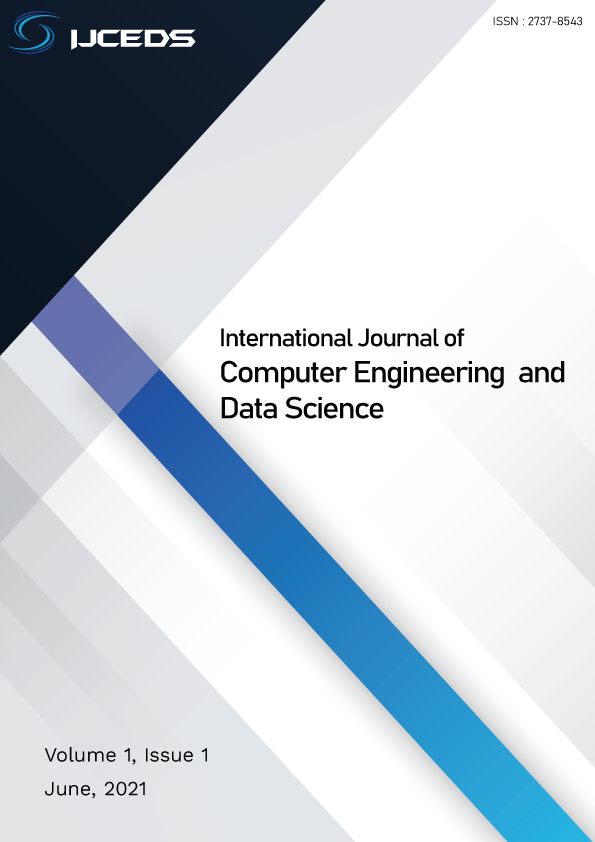A survey on artificial intelligence in ophthalmology: keratoconus classification
Keywords:
Artificial Intelligence, Machine Learning, Deep Learning, Ophthalmology, KeratoconusAbstract
The progressive integration of artificial intelligent tools in ophthalmology can potentially change the fundamental activities and the practices of ophthalmologists. Intelligent systems based on machine learning allow the detection and classification of several diseases such as age-related macular degeneration, glaucoma, diabetic retinopathy and keratoconus with high precision. The dependence between ophthalmology and images processing, given that almost of these diseases are identified by the analysis of the eye topographic maps, represents a point of at-traction for researchers to benefit of capacity and performance of deep learning tools in image processing. These deep learning tools allow a better differentiation between a sick eye and a normal eye and offer several advantages in the detection and classification of different diseases based on the analysis of the eye topographic maps. Among the diseases already mentioned, keratoconus, this non-inflammatory disease characterized by a progressive thinning of the cornea is of-ten accompanied by aspens of vision. This disease has been the subject of several research studies which aim to produce intelligent systems to assist ophthalmologists in the diagnosis and treatment of keratoconus. This paper represents a state of art of the application of artificial intelligence in ophthalmology, particularly in the detection and classification of keratoconus.
Downloads
References
Rahimy, E.: Deep learning applications in ophthalmology. Curr Opin Ophthalmol 29(3), 254–260 (2018).
Balyen, L., Peto, T.: Promising artificial intelligence–machine learning–deep learning algorithms in ophthalmology. Asia-Pacific Journal of Ophthalmology 8(3), 264–272 (2019).
Ting, D. S. W., Pasquale, L. R., et all.: Artificial intelligence and deep learning in ophthalmology. British Journal of Ophthalmology 103(2), 167–175 (2019).
Yousefi, S., et all.: Detection of Longitudinal Visual Field Progression in Glaucoma Using Machine Learning. American Journal of Ophthalmology 193, 71–79 (2018).
Gargeya, R., Leng, T.: Automated Identification of Diabetic Retinopathy Using Deep Learning. Ophthalmology 124(7), 962–969 (2017).
Kamiya, K., Ayatsuka, Y., et all.: Keratoconus detection using deep learning of colour-coded maps with anterior segment optical coherence tomography: A diagnostic accuracy study. BMJ Open 9(9), 1–7 (2019).
Grewal, P. S., Oloumi, F., et all.: Deep learning in ophthalmology: a review. Canadian Journal of Ophthalmology, 53(4), 309–313 (2018).
Lin, S. R., Ladas, J. G., et all.: A Review of Machine Learning Techniques for Keratoconus Detection and Refractive Surgery Screening. Seminars in Ophthalmology, 34(4), 317–326 (2019).
Deo, R. C.: Machine learning in medicine. Circulation, 132(20), 1920–1930 (2015).
Sainath, T. N., Mohamed, A.-R., et all.: Deep CNN for LVCSR. In: 2013 International Conference on Acoustics, Speech and Signal Processing, pp. 8614–8618. IEEE, Vancouver (2013).
Jordi, T., Valls, A., Puig, D.: A deep learning interpretable classifier for diabetic retinopathy disease grading. Neurocomputing 396, 465–476 (2019).
Juneja, M., Singh, S., et all.: Automated detection of Glaucoma using deep learning convolution network (G-net). Multimed Tools Appl, (2019).
Kim, S. J., Cho, K. J., Oh, S.: Development of machine learning models for diagnosis of glaucoma. PLoS One 12(5), 1–16 (2017).
Dong, Y., Zhang, Q., et all.: Classification of Cataract Fundus Image Based on Deep Learning. In: 2017 IEEE International Conference on Imaging Systems and Techniques (IST), pp. 2–6. IEEE, Beijing (2017).
Qian, X., et all.: Machine Learning on Cataracts Classification Using SqueezeNet. In: 4thInternational Conference on Universal Village (UV). IEEE, Boston (2018).
Floriano, A. G., Ferreira-Santiago, Á., et all.: A machine learning approach to medical image classification: Detecting age-related macular degeneration in fundus images. Computers and Electrical Engineering 75, 218–229 (2019).
https://www.davisopticians.co.uk/eyehealth/Keratoconus.asp. last visit: 03/06/2021.
Lavric, A., Valentin, P.: KeratoDetect: Keratoconus Detection Algorithm Using Convolutional Neural Networks. Computational Intelligence and Neuroscience 2019, 1–9 (2019).
Issarti, I., Consejo, A., et all.: Computer aided diagnosis for suspect keratoconus detection. Computers in Biology and Medicine 109(January), 33–42 (2019).
Salem, B. R., Solodovnikov, V. I.: Decision support system for an early-stage keratoconus diagnosis. Journal of Physics: Conf. Ser. 1419, (2019).
Hallett, N., Yi, K., et all.: Deep Learning Based Unsupervised and Semi-supervised Classification for Keratoconus. ArXiv.org, https://arxiv.org/abs/ 2001.11653, 1–7 (2020).
Yousefi, E., Id, H. T., et all.: Keratoconus severity identification using unsupervised machine learning. PLoS ONE 13(11), 1–11(2018).
Castro-luna, G. M., et all.: Contact Lens and Anterior Eye Robust keratoconus detection with Bayesian network classifier for Placido-based corneal indices. Contact Lens and Anterior Eye, Available online 20 December 2019, (2019).
Accardo, P. A., Pensiero, S.: Neural network-based system for early keratoconus detection from corneal topography. Journal of Biomedical Informatics 35(3), 151–159 (2002).
Hidalgo, I, R., Gatinel, D., et all.: Validation of an Objective Keratoconus Detection System Implemented in a Scheimpflug Tomographer and Comparison With Other Methods. Cornea 36(6), 689–695 (2017).
Smadja, D., et all.: Detection of Subclinical Keratoconus Using an Automated Decision Tree Classification. American Journal of Ophthalmology 156(2), 237–246 (2013).
Arbelaez, M. C., Versaci, F., et all.: Use of a Support Vector Machine for Keratoconus and Subclinical Keratoconus Detection by Topographic and Tomographic Data. OPHTHA 119(11), 2231–2238 (2012).
Ali, A. H., Ghaeb, N. H., Musa, Z. M.: Support vector machine for keratoconus detection by using topographic maps with the help of image processing techniques. IOSR-JPBS 12(6), 50–58 (2017).
Castro de Luna, Gracia (2019), “KERATOCONUS”, Mendeley Data, V1, http://dx.doi.org/10.17632/94dhrvf5ng.1
Downloads
Published
How to Cite
Issue
Section
ARK
License
Copyright (c) 2021 Mustapha AATILA, Mohamed LACHGAR, Hamid Hrimech, Ali Kartit

This work is licensed under a Creative Commons Attribution-NonCommercial 4.0 International License.
Copyright on any article published in the International Journal of Computer Engineering and Data Science (IJCEDS) is retained by the author(s). All articles are published under the terms of the Creative Commons Attribution-NonCommercial 4.0 International License (CC BY-NC 4.0), which permits any non-commercial use, distribution, and reproduction in any medium, provided that the original work is properly cited.
License Agreement
By submitting and publishing their work in IJCEDS, the authors:
-
Grant IJCEDS the non-exclusive right to publish the article and to identify IJCEDS as the original publisher.
-
Authorize any third party to use, share, and reproduce the article for non-commercial purposes, provided that appropriate credit is given to the original authors and source, and a link to the license is included.















